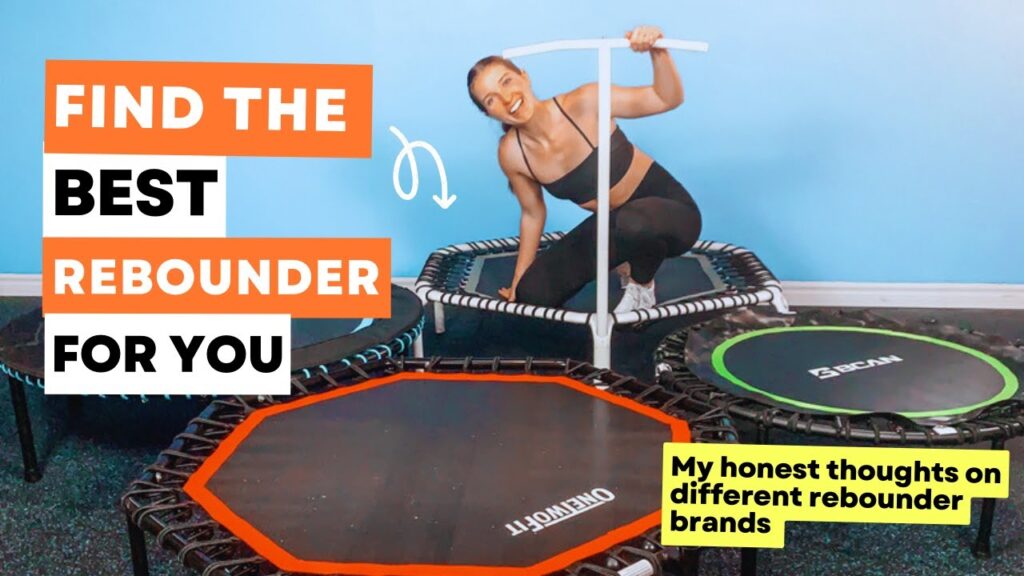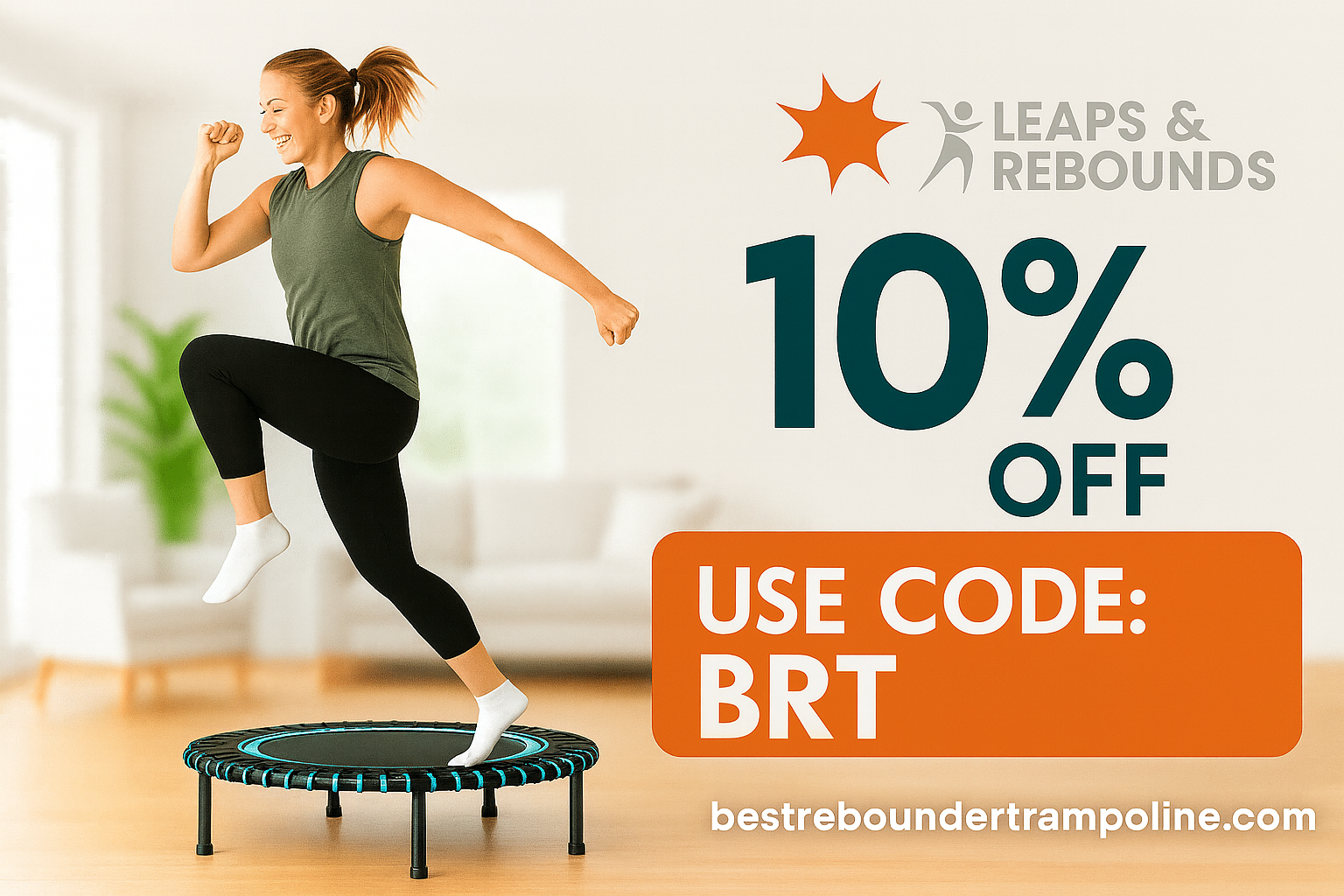FREE SHIPPING SELF-ASSEMBLY MODELS
Are rebound trampolines worth it?
Rebound trampolines, often known as mini trampolines, have gained popularity due to their numerous health benefits. These compact exercise tools are not only fun but also provide an effective cardiovascular workout. Utilizing a rebound trampoline can increase lymphatic flow, improve balance and coordination, and even aid in weight loss. The convenience of having a rebound trampoline at home makes it easier to squeeze in a quick workout, contributing to a more active lifestyle.
Benefits of Rebound Trampolines
- Low-Impact Exercise: Unlike running or high-intensity interval training, rebound trampolines offer low-impact exercise, reducing strain on your joints and minimizing the risk of injury.
- Improved Cardiovascular Health: Regular use of a rebound trampoline helps to enhance cardiovascular fitness by increasing heart rate and improving circulation.
- Enhanced Coordination and Balance: The need to maintain balance while jumping on a rebound trampoline strengthens your core and improves overall stability.
Cost-effectiveness
When evaluating if rebound trampolines are worth the investment, their cost-effectiveness is a significant factor. Compared to gym memberships and expensive home gym equipment, rebound trampolines are relatively affordable. Additionally, they require minimal maintenance, making them a budget-friendly option for long-term use. The initial investment is often outweighed by the benefits you receive, offering great value for your money.
Can you use a regular trampoline for rebounding?
Rebounding is a popular exercise that involves bouncing on a small trampoline, known as a rebounder, to improve cardiovascular health, balance, and muscle tone. While it might be tempting to use a regular trampoline for rebounding, there are significant differences between the two that you should consider.
A **regular trampoline** is typically larger and designed for high jumps and stunts. It provides a different kind of bounce, which can affect the effectiveness of your rebound exercises. The springs on a regular trampoline are usually stiffer, offering less give and making it harder to achieve the quick, controlled movements beneficial for rebounding. This type of bounce might also increase the risk of injury if not executed carefully.
On the other hand, **rebounders** are specifically designed for low-impact, repetitive bouncing. They usually have a more forgiving mat and springs that allow for a softer, more controlled bounce. This design not only enhances the overall effectiveness of your workout but also reduces the stress on your joints.
So, while you might save on costs by using a regular trampoline, investing in a specialized rebounder might offer significant benefits, especially if you are serious about incorporating rebounding into your fitness routine.
FREE SHIPPING SELF-ASSEMBLY MODELS
What is an alternative to a rebounder?
When looking for an alternative to a rebounder, several effective options can cater to various fitness levels and preferences. One popular option is the **exercise ball**, also known as a stability ball. This versatile equipment allows you to perform a range of exercises that improve balance, coordination, and core strength. Using an exercise ball can help achieve similar benefits to a rebounder by engaging in dynamic and low-impact workouts.
Another excellent alternative is the **mini stepper**. This compact piece of equipment simulates the motion of stair climbing, providing a cardiovascular workout that enhances leg muscles and promotes overall fitness. Mini steppers are especially suitable for those who prefer a low-impact exercise that can be performed indoors while still offering a high-calorie burn.
For those who enjoy outdoor activities, **jump rope** can be a fantastic alternative. Jumping rope increases heart rate, improves coordination, and can be easily incorporated into various workout routines. It’s a cost-effective option that requires minimal space and offers significant cardiovascular and muscle toning benefits, similar to what a rebounder provides.
Additional Alternatives
- Resistance Bands: Ideal for strength training and flexibility exercises, offering a portable and versatile workout solution.
- Elliptical Machine: Provides a low-impact cardiovascular workout, closely mimicking the benefits of jogging without stressing the joints.
- Bosu Ball: Enhances balance and stability exercises, making it a suitable choice for core workouts and physical therapy.
Considering these alternatives to a rebounder can help diversify your fitness routine, accommodate different exercise preferences, and achieve specific fitness goals without limiting yourself to one type of equipment.
FREE SHIPPING SELF-ASSEMBLY MODELS
What size rebound trampoline do I need?
Choosing the right size for your rebound trampoline is crucial to ensuring you get the most out of your exercise routine. The size of your trampoline directly impacts the intensity and variety of exercises you can perform. Generally, rebound trampolines come in a range of sizes, typically from 36 inches to 50 inches in diameter. It’s important to consider your available space at home, your height, and your specific fitness goals when determining the appropriate size.
Consideration of Space and Location
Before making a purchase, measure the area where you plan to place the rebound trampoline. Small apartments or homes with limited space might only accommodate a 36-inch trampoline, which is compact and easily storable. However, if you have a dedicated workout area or a spacious living room, you may opt for a larger size, such as a 44 or 50-inch trampoline. Larger trampolines provide more stability and a broader jumping surface, enhancing your workout experience.
Tailoring to Your Fitness Goals
The size of the rebound trampoline you select should align with your fitness goals. **Smaller trampolines** are ideal for quick, high-intensity interval training (HIIT) sessions, core exercises, and focused muscle group workouts. On the other hand, **larger trampolines** offer a more extensive surface, making them better suited for a variety of aerobic exercises, extended bouncing sessions, and routines that incorporate wider leg and arm movements. Consider the type and intensity of the workouts you intend to perform to choose the trampoline size that will best meet your needs.
User Height and Weight Considerations
Taller individuals and those with a heavier build should consider larger rebound trampolines. A 44 or 50-inch model will provide the extra room needed for safe, comfortable jumping and support a higher weight capacity. **Smaller trampolines** might be sufficient for shorter individuals or those with a lighter build, but it’s essential to check the manufacturer’s weight limit specifications. Ensuring that the trampoline can comfortably support your weight and height will contribute significantly to a more effective and enjoyable workout experience.

William Liveman, also known as BounceBoss, is the visionary founder of Best Rebounder Trampoline. His personal journey through recovery using a rebounder has inspired the mission and vision of our blog. William is dedicated to sharing the benefits of rebounding and helping others find joy and health through this exercise. His leadership and passion drive the entire team to deliver the best content possible.




